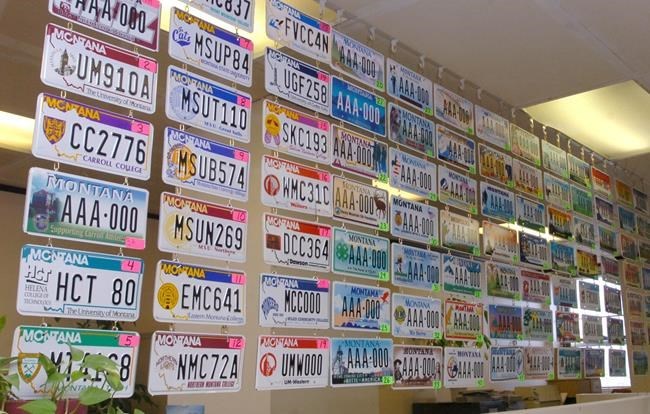HELENA, Mont. (AP) — Montana has become the latest state to stop making license plates because of disruption in the U.S. aluminum supply — another example of supply chain problems caused by the pandemic.
Montana Correctional Enterprises, which makes the plates at the state prison, ran out of aluminum this week said Carolynn Bright, spokesperson for the Montana Department of Corrections. Another shipment of aluminum isn’t expected until December, officials said.
“We knew this might be a possibility because it’s been an issue at other license plate factories throughout the nation,” said Gayle Butler, administrator of Montana Correctional Enterprises, a division of the Department of Corrections.
In May, North Carolina suspended its program to replace license plates that are more than six years old due to an aluminum shortage while Arizona had an aluminum supply chain problem that cleared up in June.
Montana is searching for other places to get aluminum but others who have the metal don’t want to sell it because of the same supply shortage, Butler said in a statement.
There are problems across all supply chains due to the COVID-19 pandemic, in part due to a surge in demand as economies reopened that outstripped the ability of suppliers to keep up, said Mark Zandi, the chief economist with Moody’s Analytics. Other industries have struggled to find enough computer chips and lumber during the pandemic.
A recent surge of COVID-19 in Southeast Asia led factories and ports to shut down, Zandi said. In addition, energy costs are higher and making aluminum is energy intensive, leading to higher prices.
Shortages for aluminum for license plates are more likely linked to supply chain disruptions than an actual shortage of material, said Christopher Davis, a regional price reporting director for S&P Global Platts.
There is aluminum available on the spot market, but it might cost more than it did a year ago, Davis said, and it might take longer to get where it’s needed due to the same logistics and labor challenges affecting supply chains globally.
About 750,000 license plates are made each year at the Montana State Prison in the small community of Deer Lodge. The plate design and numbers are printed on reflective sheets that are applied to pieces of aluminum.
County motor vehicle departments and authorized license plate distribution agents in Missoula and Billings still have some license plates available, said Laurie Bakri, administrator of the state's Motor Vehicle Division.
State officials are trying to determine how many aluminum plates are still in stock and whether counties with extra plates can share them with other counties that have dwindling supplies, she said.
“We’re assuming our big counties will run out (of plates) quicker,” Bakri said.
For now, Montana Correctional Enterprises is printing plate numbers on the reflective sheets and placing them inside plastic sleeves, similar to the temporary registration license plates that are issued before people get their permanent plates, officials said.
If the shortage continues, Montana plans to apply the reflective sheets onto PVC sheeting to create license plates, Bakri said. People who receive the temporary plates will get permanent plates when regular production resumes, Bakri said.
“Hopefully we won’t have to see any of those on cars, but that is our backup plan should aluminum not come in in December,” she said.
Amy Beth Hanson, The Associated Press



